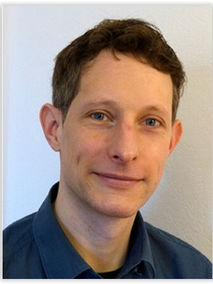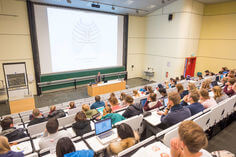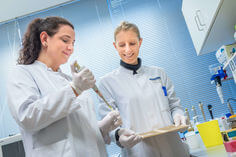
Dr. Carlos Bas Orth
Gruppenleiter
Adresse
Im Neuenheimer Feld 30769120 Heidelberg
Curriculum vitae
Ph.D. 2007 Goethe University Frankfurt
2007-2009 Postdoctoral Fellow, Dept. of Pharmacology, Weill Cornell Medical College, New York, USA
2009-2017 Postdoctoral Fellow, Dept. of Neurobiology, University of Heidelberg
2018-present Scientist, Group Leader, Dept. of Anatomy and Cell Biology, University of Heidelberg
Awards
2009-2010 Postdoctoral fellowship, Exzellenzcluster CellNetworks at University of Heidelberg
2007-2009 Postdoctoral fellowship, German Research Foundation (DFG)
2000 International exchange scholarship, German Academic Exchange Service (DAAD)
2011 Travel Award: German Society for Neuroscience
Selected Publications
Research papers
Bas-Orth C*, Schneider J*, Lewen A, McQueen J, Hasenpusch-Theil K, Theil T, Hardingham GE, Bading H, Kann O (2019) The mitochondrial calcium uniporter is crucial for the generation of fast cortical network rhythms. J Cereb Blood Flow Metab 271678X19887777 [Epub ahead of print] *equal contribution
Depp C*, Bas-Orth C*, Schroeder L, Hellwig A, Bading H (2018) Synaptic Activity Protects Neurons Against Calcium-Mediated Oxidation and Contraction of Mitochondria During Excitotoxicity. Antioxid Redox Signal 29:1109-1124 *equal contribution
Bas-Orth C, Tan YW, Lau D, Bading H (2017) Synaptic Activity Drives a Genomic Program That Promotes a Neuronal Warburg Effect. J Biol Chem 292:5183-5194
Bas-Orth C*, Tan YW*, Oliveira AM*, Bengtson CP, Bading H (2016) The calmodulin-binding transcription activator CAMTA1 is required for long-term memory formation in mice. Learn Mem 23:313-21 *equal contribution
Ahlgren H, Bas-Orth C, Freitag HE, Hellwig A, Ottersen OP, Bading H (2014) The nuclear calcium signaling target, activating transcription factor 3 (ATF3), protects against dendrotoxicity and facilitates the recovery of synaptic transmission after an excitotoxic insult. J Biol Chem 289: 9970-9982
Vlachos A, Ikenberg B, Lenz M, Becker D, Reifenberg K, Bas-Orth C, Deller T (2013) Synaptopodin regulates denervation-induced homeostatic synaptic plasticity. Proc Natl Acad Sci U S A 110:8242-8247
Cohen MS*, Bas Orth C*, Kim HJ, Jeon NL, Jaffrey SR (2011) Neurotrophin mediated dendrite-to-nucleus signaling revealed by microfluidic compartmentalization of dendrites. Proc Natl Acad Sci U S A 108:11246-11251. *equal contribution
Jedlicka P, Schwarzacher SW, Winkels R, Kienzler F, Frotscher M, Bramham CR, Schultz C, Bas Orth C, Deller T (2009) Impairment of in vivo theta-burst long-term potentiation and network excitability in the dentate gyrus of synaptopodin-deficient mice lacking the spine apparatus and the cisternal organelle. Hippocampus 19:130-140
Bas Orth C*, Schultz C*, Muller CM, Frotscher M, Deller T (2007) Loss of the cisternal organelle in the axon initial segment of cortical neurons in synaptopodin-deficient mice. J Comp Neurol 504:441-449. *equal contribution
Bas Orth C, Vlachos A, Del Turco D, Burbach GJ, Haas CA, Mundel P, Feng G, Frotscher M, Deller T (2005) Lamina-specific distribution of Synaptopodin, an actin-associated molecule essential for the spine apparatus, in identified principal cell dendrites of the mouse hippocampus. J Comp Neurol 487:227-239.
Reviews
Hagenston AM, Bading H, Bas-Orth C (2019) Functional Consequences of Calcium-Dependent Synapse-to-Nucleus Communication: Focus on Transcription-Dependent Metabolic Plasticity. Cold Spring Harbor perspectives in biology
Bas-Orth C, Bading H (2013) The divergence-convergence model of acquired neuroprotection. Mechanisms of development 130:396-401
Deller T, Bas Orth C, Del Turco D, Vlachos A, Burbach GJ, Drakew A, Chabanis S, Korte M, Schwegler H, Haas CA, Frotscher M (2007) A role for synaptopodin and the spine apparatus in hippocampal synaptic plasticity. Ann Anat 189: 5-16



